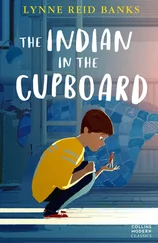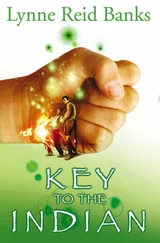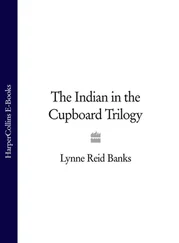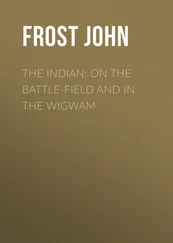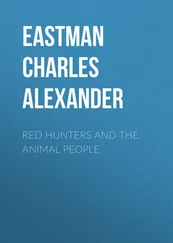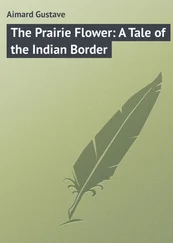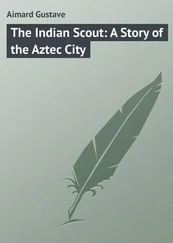Charles Eastman - The Indian To-day
Здесь есть возможность читать онлайн «Charles Eastman - The Indian To-day» — ознакомительный отрывок электронной книги совершенно бесплатно, а после прочтения отрывка купить полную версию. В некоторых случаях можно слушать аудио, скачать через торрент в формате fb2 и присутствует краткое содержание. Жанр: foreign_antique, foreign_prose, на английском языке. Описание произведения, (предисловие) а так же отзывы посетителей доступны на портале библиотеки ЛибКат.
- Название:The Indian To-day
- Автор:
- Жанр:
- Год:неизвестен
- ISBN:нет данных
- Рейтинг книги:3 / 5. Голосов: 1
-
Избранное:Добавить в избранное
- Отзывы:
-
Ваша оценка:
- 60
- 1
- 2
- 3
- 4
- 5
The Indian To-day: краткое содержание, описание и аннотация
Предлагаем к чтению аннотацию, описание, краткое содержание или предисловие (зависит от того, что написал сам автор книги «The Indian To-day»). Если вы не нашли необходимую информацию о книге — напишите в комментариях, мы постараемся отыскать её.
The Indian To-day — читать онлайн ознакомительный отрывок
Ниже представлен текст книги, разбитый по страницам. Система сохранения места последней прочитанной страницы, позволяет с удобством читать онлайн бесплатно книгу «The Indian To-day», без необходимости каждый раз заново искать на чём Вы остановились. Поставьте закладку, и сможете в любой момент перейти на страницу, на которой закончили чтение.
Интервал:
Закладка:
The Indian, in his simple philosophy, was careful to avoid a centralized population, wherein lies civilization's devil. He would not be forced to accept materialism as the basic principle of his life, but preferred to reduce existence to its simplest terms. His roving out-of-door life was more precarious, no doubt, than life reduced to a system, a mechanical routine; yet in his view it was and is infinitely happier. To be sure, this philosophy of his had its disadvantages and obvious defects, yet it was reasonably consistent with itself, which is more than can be said for our modern civilization. He knew that virtue is essential to the maintenance of physical excellence, and that strength, in the sense of endurance and vitality, underlies all genuine beauty. He was as a rule prepared to volunteer his services at any time in behalf of his fellows, at any cost of inconvenience and real hardship, and thus to grow in personality and soul-culture. Generous to the last mouthful of food, fearless of hunger, suffering, and death, he was surely something of a hero. Not "to have," but "to be," was his national motto.
As parents are responsible for the conduct of their children, so was the Indian clan responsible for the behavior of its members, both among themselves and in relation to other clans. This simple family government extended throughout the bands, tribes, and nations. There was no "politics" and no money in it for any one. The conscience was never at war with the mind, and no undue advantage was sought by any individual. Justice must be impartial; hence if the accused alone knew the facts, it was a common thing for him to surrender himself.
As regards the original Indian warfare, it was founded upon the principle of manly rivalry in patriotism, bravery, and self-sacrifice. The willingness to risk life for the welfare or honor of the people was the highest test of character. In order that the reputations thus gained might be preserved as an example to the young, a system of decorations was evolved, including the symbolic wearing of certain feathers and skins, especially eagle feathers, and the conferring of "honor names" for special exploits. These distinctions could not be gained unjustly or by favoritism, as is often the case with rank and honors among civilized men, since the deeds claimed must be proved by witnesses before the grand council of war chiefs. If one strikes an enemy in battle, whether he kills him or not, he must announce the fact in a loud voice, so that it may be noted and remembered. The danger and difficulty is regarded above the amount of damage inflicted upon the enemy, and a man may wear the eagle plumes who has never taken a life.
It is easily seen that these intertribal contests were not based upon the same motives nor waged for the same objects as the wars of civilization – namely, for spoil and territorial aggrandizement. There was no mass play; army was not pitted against army; individual valor was held in highest regard. It was not usual to take captives, except occasionally of women and children, who were adopted into the tribe and treated with kindness. There was no traffic in the labor or flesh of prisoners. Such warfare, in fact, was scarcely more than a series of duels or irregular skirmishes, engaged in by individuals and small groups, and in many cases was but little rougher than a game of university football. Some were killed because they were caught, or proved weaker and less athletic than their opponents. It was one way of disciplining a man and working off the superfluous energy that might otherwise lead to domestic quarrels. If he met his equal or superior and was slain, fighting bravely to the end, his friends might weep honorable tears.
The only atrocity of this early warfare was the taking of a small scalp lock by the leader, as a semi-religious trophy of the event; and as long as it was preserved, the Sioux warriors wore mourning for their dead enemy. Not all the tribes took scalps. It was only after the bounties offered by the colonial governments, notably in Massachusetts and Pennsylvania, for scalps of women and children as well as men, that the practice became general, and led to further mutilations, often stigmatized as "Indian," though in reality they have been practised by so-called civilized nations down to a recent period. That one should do murder for pay is not an Indian idea but one imposed upon the race by white barbarians.
It was a custom of the Plains Indians to hold peaceful meetings in summer, at which times they would vie with one another in friendliness and generosity. Each family would single out a family of another tribe as special guests of honor. Valuable horses and richly adorned garments were freely given at the feasts and dances. During these intertribal reunions the contests between the tribes were recalled and their events rehearsed, the dead heroes on both sides receiving special tributes of honor. Parents would entertain the participants in an engagement in which their son had fallen, perhaps, the year before, giving lavish hospitality and handsome presents in token that all was done in fair fight, and there remained no ill feeling.
Whatever may be said for this scheme of life, its weaknesses are very apparent, and resulted in its early fall when confronted with the complicated system of our so-called civilization. With us the individual was supreme; all combination was voluntary in its nature; there was no commerce worthy the name, no national wealth, no taxation for the support of government, and the chiefs were merely natural leaders with much influence but little authority. The system worked well with men who were all of the same mind, but in the face of a powerful government and an organized army it quickly disintegrated and collapsed. Could the many small tribes and bands have formed a stable combination or league, they might have successfully resisted the invader; but instead they stood separately, though too weak to maintain their dignity by force, and in many cases entered upon a devastating warfare with one another, using the new and more deadly weapons, thus destroying one another. Since there was no central government, but a series of loose confederations of linguistic or allied groups, each of which had its titular head, able to make treaties or to declare war, these bands were met and subdued one at a time.
The original North American knew no fermented or spirituous drink. To be sure, he used a mild narcotic – tobacco mixed with aromatic leaves or bark, and smoked in strict moderation, generally as a semi-religious ceremony. Though wild grapes were found here in abundance, none had ever made wine from them. The introduction of liquor completed the ruin of our race.
During a long period the fur trade was an important factor in the world's commerce, and accordingly the friendship and favor of the natives were eagerly sought by the leading nations of Europe. Great use was made of whiskey and gunpowder as articles of trade. Demoralization was rapid. Many tribes were decimated and others wiped out entirely by the ravages of strong drink and disease, especially smallpox and cholera. The former was terribly fatal. The Indians knew nothing of its nature or treatment, and during the nineteenth century the tribes along the Mississippi and Missouri rivers suffered severely. Even in my own day I have seen and talked with the few desolate survivors of a thriving village.
In the decade following 1840 cholera ravaged the tribes dwelling along the great waterways. Venereal disease followed upon the frequent immoralities of white soldiers and frontiersmen. As soon as the Indian came into the reservation and adopted an indoor mode of life, bronchitis and pneumonia worked havoc with him, and that scourge of the present-day red man, tuberculosis, took its rise then in overcrowded log cabins and insanitary living, together with insufficient and often unwholesome food. During this period there was a rapid decline in the Indian population, leading to the now discredited theory that the race was necessarily "dying out" from contact with civilization.
Читать дальшеИнтервал:
Закладка:
Похожие книги на «The Indian To-day»
Представляем Вашему вниманию похожие книги на «The Indian To-day» списком для выбора. Мы отобрали схожую по названию и смыслу литературу в надежде предоставить читателям больше вариантов отыскать новые, интересные, ещё непрочитанные произведения.
Обсуждение, отзывы о книге «The Indian To-day» и просто собственные мнения читателей. Оставьте ваши комментарии, напишите, что Вы думаете о произведении, его смысле или главных героях. Укажите что конкретно понравилось, а что нет, и почему Вы так считаете.
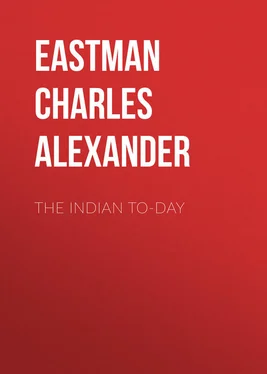
![О Генри - Бабье лето Джонсона Сухого Лога [The Indian Summer of Dry Valley, Johnson]](/books/407344/o-genri-babe-leto-dzhonsona-suhogo-loga-the-india-thumb.webp)


